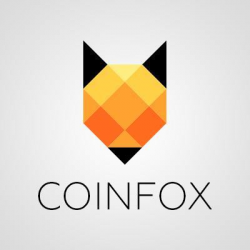What is the next step for Steemit
We are approached the platform’s CEO and Co-Founder Ned Scott and asked him about the experience gained from the recent events and what to expect from Steemit in the near future.

CoinFox:
Can you tell us what happened on 14 July when Steemit was hacked? What lessons have we learned?
Ned Scott:
One lesson we learned is to make further use of open source. The best thing we could have done would have been to make the GUI open source earlier than we did. Because the hacker was able to exploit a bug in the sanitation method via cross scripting injection, maliciously pulling user keys, the attacker was able to transfer a few thousand in funds. The other thing we learned is that Steem Power, which is Steem locked up with time delay for withdrawals, is a very important security feature. Steemit’s recently added Account Recovery process, which allows users to have a partner who can help them regain their account in the event of a hack, means the rightful owner can regain their account without losing any Steem Power.
CF:
To create Steem, you partnered with Daniel Larimer. How did you two meet and start working together?
NS:
Dan has been in Bitcoin since 2009, when he was actually looking to create a digital currency solution himself with the idea that people need their own community-operated currency to be truly empowered. Dan then found Bitcoin and became a persistent early contributor, even speaking with Satoshi on several occasions via BitcoinTalk. I came upon Bitcoin in early 2013 and woke up to the possibilities. It wasn’t much later that I found Dan who was beginning work on the Bitshares project, which is the idea of an application-specific blockchain that supports a decentralized exchange. This idea came out of the realization that exchanges may be vulnerable, which everyone was feeling after we saw Mt. Gox collapse. Today things may be different for exchanges and in some cases they are a particular strength in the industry, however, it was just a week ago that we witnessed Bitfinex suffer a very large hack. In 2015 I approached Dan to determine where else we could apply this innovative blockchain technology. Later that year, our discussion evolved to the way blockchains could benefit mutual aid societies and micro insurance. The idea resonated with me and I headed to Blacksburg, Virginia to meet with Dan and discuss how we could implement it. In January, the concept morphed and was further refined when we finally realized that this technology could dramatically improve social media.
CF:
Can you tell us more about Steem blockchain? What is special about it?
NS:
Steem is special in that it has all the intangibles to support real-time applications and bring the benefits of blockchain, such as immutability, to the public domain of content. The effect of such a platform is that it is completely open, allowing developers from all over the world to bring their skills and build their own projects. Every new project that appears on Steemit is a great complement to the apps that are already there, as the effect of competition is that the blockchain begins to approach network effect at a faster and faster rate.
CF:
How would you describe an average Steemian? How do you see your target audience?
NS:
We are seeing Steemians from all over the world and many walks of life. That’s the beauty of this community: it’s without censorship and welcoming to all who are willing to work to be a part of it. As our business, steemit.com, is still in beta, we are happy to see things grow organically, however, it is worth noting that we are seeing very consistent arrival of libertarians, which to us makes perfect sense as it’s philosophically in line with blockchain technology.
CF:
Steemit is a curated platform, which means that the best-voted publications rise to the top of the newsfeed and get more visibility, votes and a larger reward. What makes for a good content on Steemit?
NS:
It’s hard to say. The Steemit platform is young and we’ve seen the top pages evolve quite dramatically over the last several weeks. At a high level we’d suggest good formatting, good insight, and images. It also is important for users to "introduce themselves," which helps the community understand they are dealing with a real person. It’s a great way to begin building relationships on the site that can turn into collaborations and support down the road.
CF:
What is the next step for Steemit after the beta release, the first payout, and becoming open source? What do you plan to further improve user experience on Steemit?
NS:
In the near term we’re looking forward to improving the user experience. If this new technology is going to become mainstream, it’s going to need to support users of all technical abilities and several of the staples of blockchain technology, including management of private keys, will need to blend into the background. We also plan to improve user education through tutorials, FAQ and help sections, as well as to begin incorporating many of the features that have made other sites successful, such as notifications on Facebook and Twitter.
Diana Bogdan

We are coinfox.info
We hope that you will appreciate our work.
We will be happy to hear your comments and suggestions.
Follow us
